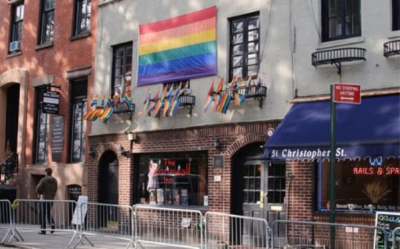June 07, 2014
“Stonewall was just the flip side of the black revolt when Rosa Parks took a stand. Finally, the kids down there took a stand. But it was peaceful. I mean, they said it was a riot; it was more like a civil disobedience.”
-- Storme DeLarverie (1920-2014), early leader in the Gay Rights Movement
June is LGBTQ Pride Month. To understand the LGBTQ movement, it’s important to appreciate the meaning of pride. Pride, according to Merriam-Webster, is “a feeling that you respect yourself and deserve to be respected by other people.” How does this translate into LGBTQ pride or pride among any other groups such as people who are Black, Jewish, women or immigrants? Especially for groups of people who have been oppressed, marginalized, discriminated against and targeted for bullying, harassment and violence, pride is key. Pride is a group of people standing together and affirming their self-worth, their history and accomplishments, their capability, dignity and their visibility. It is a vocal and powerful statement to themselves and the world that they deserve to be treated with respect and equity. Pride is a way out.
The LGBTQ Pride Movement began at Stonewall in the summer of 1969. On June 28, a police raid of the Stonewall Inn, a gay club in NYC, turned violent when customers and local sympathizers rioted against the police. The uprising embodied the mounting of anger and weariness the gay community felt about the police department targeting gay clubs and engaging in discriminatory practices, which occurred regularly during that time. And yes, it also represented their pride. The Stonewall uprising was followed by days of demonstrations in NYC and was the impetus for the creation of several gay, lesbian and bisexual civil rights organizations. One year later, the first Gay Pride marches took place in New York, Los Angeles and Chicago, commemorating the Stonewall uprising. The Pride movement was born.
Almost fifty years later, there have been major strides in the rights and treatment of LGBTQ people: in 2015, The Supreme Court ruled that same-sex couples everywhere in the U.S. have the freedom to marry; we have openly gay professional sports’ players - Michael Sam (NFL) and Jason Collins (NBA); and in June 2014, Laverne Cox became the first transgender woman to grace the cover of Time magazine At the same time, there remains much work to be done. Just as LGBTQ Pride represents a wide diversity of people and issues, there are a wide variety of opportunities for educators to celebrate, teach and demonstrate their pride for LGBTQ people:
- Reverse the pattern of invisibility by teaching the stories, history and accomplishments of LGBTQ people;
- Talk with your students about issues related to transgender and gender non-conforming acceptance, identity and rights;
- Read stories with LGBTQ people, families and friends - from picture books at an early age to chapter books, novels and non-fiction as students get older;
- Teach about the history of discrimination against LGBTQ people as well as how people have worked together to overcome injustice.










